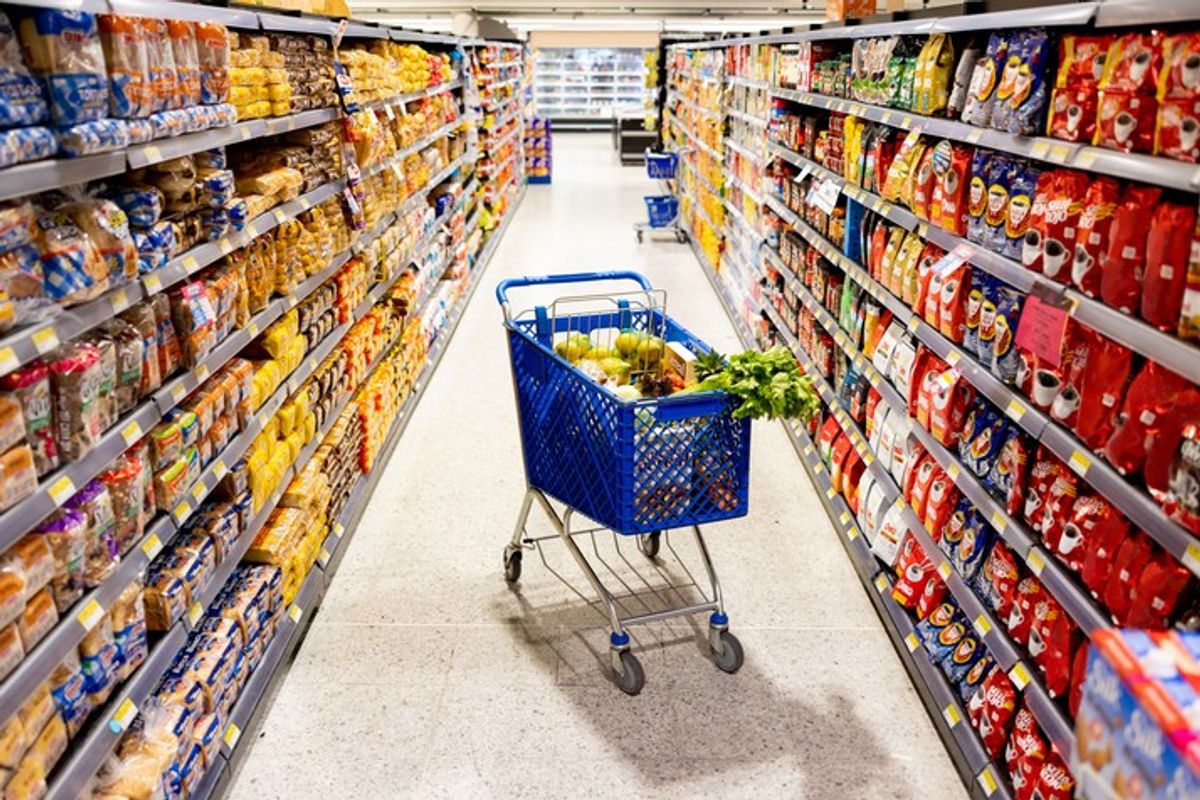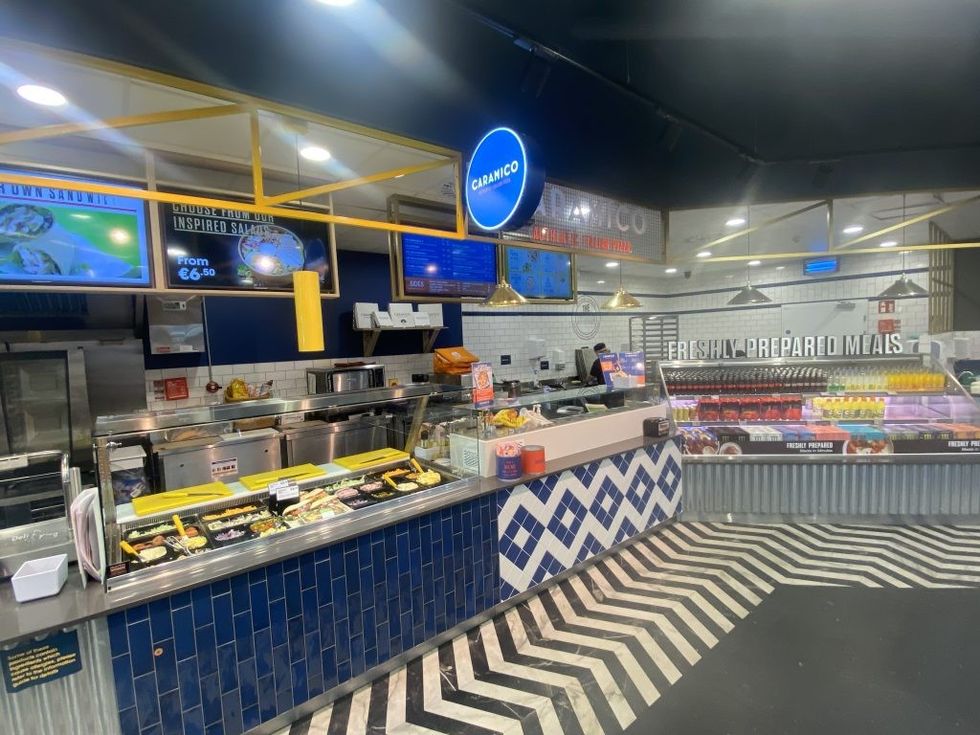As operating costs climb, market share shrinks, and margins being squeezed to the bone, convenience stores are in pressure like never before, finds Asian Trader. However, neither passing on the cost to customers nor slashing profits to be the cheapest store is a sustainable option, leaving retailers stuck between a rock and a hard place.
2025 is turning out to be a tough year for convenience channel. While each industry report indicates a slipping market share over the past few months, a storm of rises in costs from multiple fronts has extrapolated the woes of the sector.
April’s tax hikes particularly are crushing convenience stores. National Insurance Contribution jumped from 13.8 per cent to 15 per cent, with thresholds slashed, costing the average c-store over £4,400 extra a year.
National Living Wage rose to £12.21, with under-21s seeing record increases. Business relief dropped from 75 per cent to 40 per cent, doubling the strain for many.
Faced with these rising costs, obvious way forward is to either raise prices but at the risk losing customers or absorbing the cost and eroding already thin margins.
In theory, passing the costs on seems more logical. In practice, it’s rarely that simple.
As emerged in our last feature, when it comes to pricing, convenience retailers’ hands are tied due to multiple reasons.
PMP paradox
With customers more value-driven than ever, price perception is everything. And in the world of convenience, that equates to Price-Marked Packs (PMPs).
PMPs, compared to plain packs, create a sense of fairness and transparency, which in turn builds trust and drives loyalty among shoppers, even beating the perception that convenience stores are expensive.
Tanya Pepin from data powerhouse TWC agrees, “There are myriad of researches that show the power of the price mark packs in driving consumer confidence, making shoppers believe that they are getting a fair price.”
Highlighting the widespread presence of PMPs, Ed Roberts from Talysis, states that a third of listings in wholesalers are PMP (excluding tobacco).
“In grocery frozen, almost seven out of every 10 listing are for PMP SKU’s (68 per cent) showing this is a key department for PMP, possibly an overlooked line in the convenience market.”
56 per cent of soft drinks, 51 per cent of crisps and snacks, and 43 per cent of confectionery listings are price-marked.
When it comes to the convenience channel, PMPs clearly rule the roost in small and mid-sized stores. But they come at a cost.
While plain pack branded products deliver 30 per cent to convenience retailers, the PMP lines slash it to 15-20 per cent. This is in stark contrast to the own labels that offer 33 to 40 per cent margin and even fresh produce that comes with up to 35 per cent margin.
Pepin from TWC echoes the concern though also maintains that margins are holding steady in some lines.

“We are picking up clear concerns from wholesalers about margin erosion. Indeed, given the wholesaler has no control over the exact price point on a price marked pack, it is understandable that wholesalers and retailers are concerned about maintaining an adequate shared margin.
“However, we recently reviewed promotion leaflets for a number of different wholesalers and found that retail margins continued to be consistent with historic margin levels, despite cost pressure and price inflation challenges.
“Clearly, it is maintaining that margin through the rest of the year while ensuring that convenience retailers remain price competitive versus the multiples and discounter. It is the role of the wholesaler to push brand owners to manage costs to achieve a fair shared margin,” Pepin told Asian Trader.
The Dilemma
While the impact of PMPs in the convenience market is well-established and documented as well, it still garners mixed opinions from retailers, exposing a huge dilemma.
While almost every retailer acknowledges the role of PMPs in building loyalty and trust and stock the line generously, many are now feeling the pinch of margin erosion.
Retailer Dee Sedani (One Stop stores in Derbyshire) and Imtiyaz Mamode (Premier Wych Lane, Gosport) still rely heavily on PMP lines considering they are great crowd pullers.
Retailer Mamode, in fact, does not intend to budge from PMPs anytime soon so as not to lose any customer base.
He explained, “Shoppers nowadays have become very savvy; some of them even check prices online while they are present in the store to make sure they are getting the lowest possible prices.”
However, as mentioned earlier, it is widely a mixed opinion.
Retailers like Neil Godhania (Premier Neil's and Dodds Road Stores, Peterborough) and Mos Patel (Family Shopper in Broadoak ) are now testing waters with non-PMP lines in the search of better margins.
Godhania feels that PMPs offer value perception to customers, but they also squeeze retailers' margins, especially on high-cost categories.
Patel on the other hand says it point blank that margins haven’t improved at all on price mark products.
“Since we can’t influence prices, we’re stuck with rising costs and no way to cover them. Non price mark covers a small percentage of stock holding,” Patel told Asian Trader.
Roberts from Talysis understands retailers' concern though stresses that PMP doesn't always mean lower profit.

“Retailers may be slightly put off by PMP as they are unable to set their own price and dictate margin.
“This is understandable, as the average margin on PMP does tend to be less. For example, in crisps and snacks the average POR on PMP is 40.4 per cent whereas non pmp (Based on RRP) is 45.7 per cent.
“In soft drinks the gap is even larger.”
Roberts is however quick to point out that this is not a universal rule.
“Only last week a wholesaler was offering Monster Mago Loco Juiced at £13.85 for the non PMP pack, whereas the PMP pack was £10.45. a margin of 29 per cent vs 40 per cent for the PMP, so its worth keeping this in mind,” he pointed out.
Roberts strongly feels PMPs are here to stay and is even making inroads in other segments as well apart from usual confectionery, soft drinks and CSN.
“Price marked packs now account for almost half (48 per cent) of energy drinks sales value. Some of the smaller categories, such as frozen pizza see very high sales of PMP lines. Almost £2 out of every £3 of frozen pizza sales in convenience stores is now through a PMP line,” Roberts revealed citing Talysis data.
Resilience and reinvention
While independent convenience’s hands are tied when it comes to pricing, supermarkets are indulging in aggressive price wars, or rather a race to the bottom.
In March, Asda gave out a clarion call saying it will become “5–10 per cent cheaper than rivals” so as to gain back some of its lost market share. Countering to Asda’s aggressive move, supermarket giant Tesco soon followed, warning it will not shy away from lowering its earnings to stay price competitive.
Independent stores have no such luxury. The solution for them lies in margin-rich categories.
In-store prepared foods — hot drinks, sandwiches, pastries — have some of the highest margins in the sector due to low input costs and high selling prices.
These hefty percentages mean food-to-go, while a smaller portion of sales, punches above its weight in profit.
Many independents, like retailers Judith Smitham (Trelander Stores and The old Dairy, Trelander), Umar Majid (Costcutter and Baba's Kitchen in Bellshill) and Atul Sodha (Londis Harefield, Uxbridge) are setting some major benchmarks in this, gaining not only loyal customers and thus more sales but also the tag of destination stores.
With an average of 37 per cent margin compared to 8.5 per cent in tobacco products, vapes are another profit-making line. However, the ban on disposable vapes from June this year along with flavour restrictions in Tobacco and Vapes Bill are threatening to badly impact this segment.
Other specialty categories (greetings cards, health/beauty products) can also carry high mark-ups (often 40–50 per cent or more), though their contribution to total sales is smaller in a convenience set up.
Clearly, retailers need to rethink their category mix.
Pepin from TWC agrees, saying, “Licensed product remains extremely important, as does tobacco, but they are both categories where we are seeing long term declines in the number of smokers and drinkers.”
Grocery is a relatively high margin category, so focusing on "meal for tonight" and wider basket mix can increase basket spend and deliver higher margins to retailers, she added.
“TWC research shows that 52 per cent of smokers and 48 per cent of wine drinkers never buy those items from a symbol or unaffiliated independent, so even though we are advising retailers not to focus solely on these categories, there is a lot they can do to drive more sales by convincing consumes to trial,” she informed.
Retail experts stress that the only solution here lies in focusing more on range, quality of service and store standards and not in further lowering the prices.
Pepin shares with Asian Trader, “With all the multiples, but led by Tesco, having ever stronger loyalty promotions, independent and wholesaler supplied convenience stores must work harder than ever to find their point of difference and maintain their footfall.”
TWC vouches for ‘quality premium’ stores which are stores in the right location with a well ranged and well-presented fixture that can command a premium price point over a supermarket.
“Indeed, the ‘convenience premium’ used to be 20 per cent and there is no reason to suggest this is not still valid for the right retailers,” Peppin added.
Convenience retail guru Scott Annan is not a big fan of any low margin range, be it even PMPs.

Without mincing his words, he pointed out, “It takes a 22 per cent gross margin simply to ‘switch the lights on’ and PMPs do not support this.”
He strongly vouches on “proprietary, daypart fresh food and coffee and hot beverages” to drive better margins for stores as they come with margins of “60 - 100 per cent”.
“The retailers that I work with in IROF - The Independent Retailer Owners Forum - do not have PMP heavy stores. Most do not sell PMPs because of their margin reduction. Their core CVP is fresh, day part food,” Annan told Asian Trader.
There are many thriving tier one independent retailers in GB and NI. The solutions to the problem to expanding margin lie within what they do, he said.
Beyond the debate and data, there lies a larger truth- that the business model of convenience retail is under pressure like never before.
But this is also a sector built on resilience and reinvention. From community-first service to smart product curation, independent retailers have weathered storms before and they can again.
With sharper focus on high-margin lines, smarter category decisions, and most importantly the vision and courage to evolve, convenience stores can hold their ground and even thrive in a rapidly changing landscape.
The future belongs not to the cheapest, but to the smartest.



